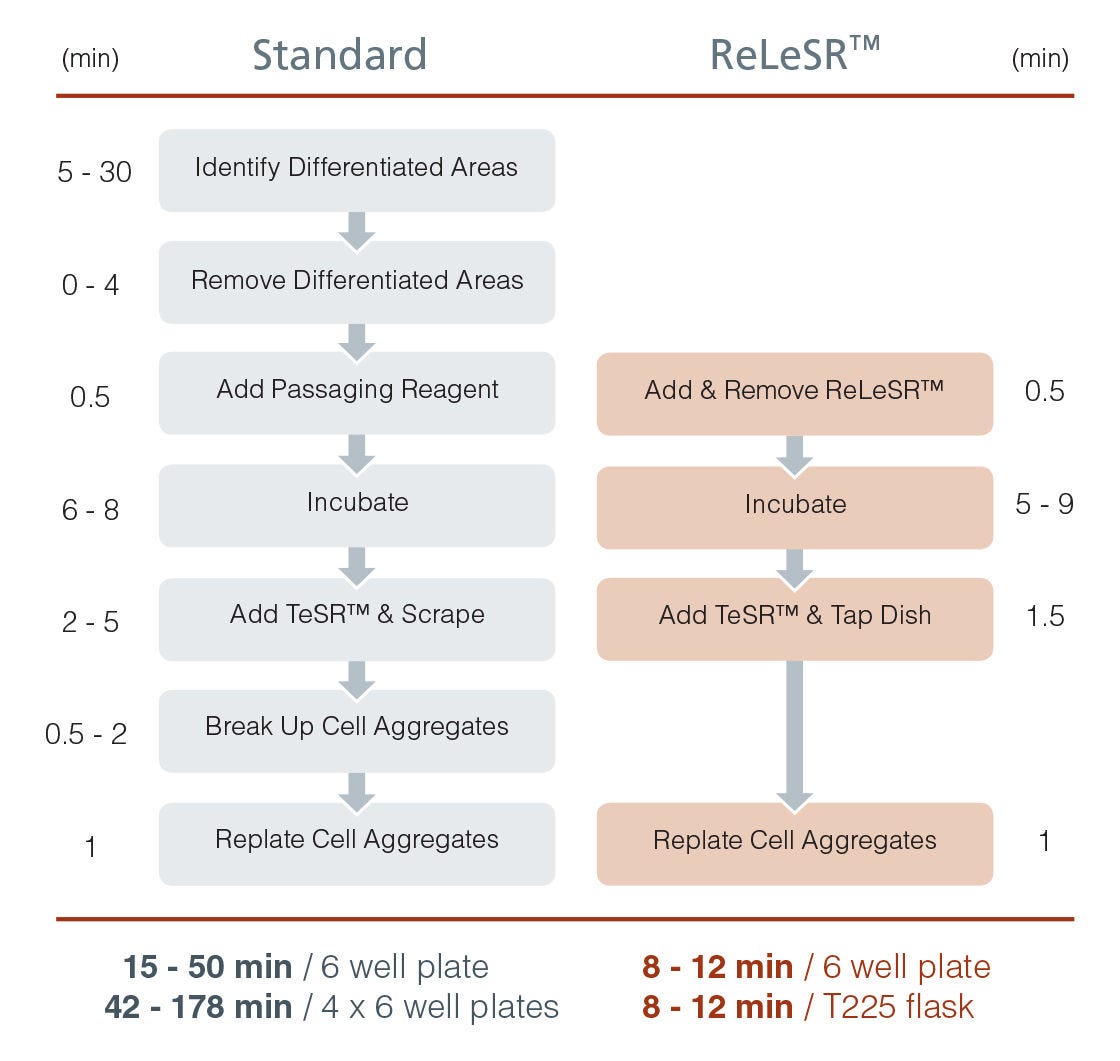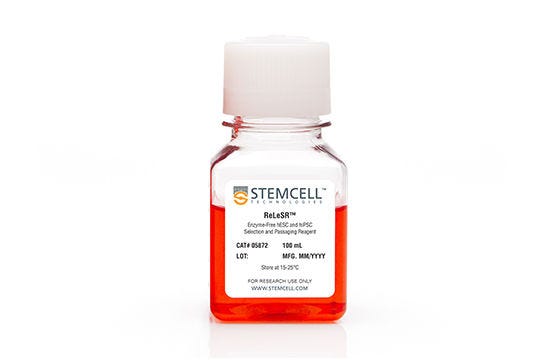ReLeSR™ Human Pluripotent Stem Cell (PSC) Passaging Reagent
ReLeSR™ Human Pluripotent Stem Cell Passaging Reagent
Passage hPSCs Without Enzymes or Manual Scraping

ReLeSR™ is a chemically defined, enzyme-free, animal component-free (ACF) reagent for dissociation and passaging of hPSCs without manual selection or scraping. Upon removal of culture medium and addition of ReLeSR™ to adherent hPSCs, undifferentiated cells are selectively detached, leaving differentiated areas behind. Passaging hPSCs with ReLeSR™ easily generates optimally-sized aggregates, while eliminating the hassle and variability associated with manual manipulation. By selectively dissociating undifferentiated cells and eliminating the need for scraping, ReLeSR™ can be used with closed vessels and many other applications. To learn more about these applications, view the data.
Why Use ReLeSR™?
- Selectively detaches undifferentiated cells, generating optimally sized aggregates without manual scraping.
- Enzyme-free formulation minimizes variability.
- Fast protocol is compatible with culture processes involving closed vessels.
- Works with mTeSR™1 and TeSR™-E8™.
ReLeSR™ Products
Traditional Methods for hPSC Passaging
Human embryonic stem (ES) and induced pluripotent stem (iPS) cells can be maintained and expanded indefinitely in an undifferentiated state. Historically, standard human pluripotent stem cell (hPSC) passaging protocols are laborious, involving manual removal of differentiated cells by aspirating or scraping, dissociation to loosen adherent colonies from the surface, and scraping of the undifferentiated cells off of the surface as cell aggregates. Subsequently, cell aggregates need to be pipeted up and down to break up the aggregates into a uniform suspension of approximately 50 - 200 µm in size. Simpler, single-cell hPSC passaging protocols have been evaluated, though aggregate-based passaging is generally recommended because repeated passaging as single cells can lead to the accumulation of chromosomal abnormalities.1
Passaging Protocol Comparison

ReLeSR™ passaging protocol eliminates difficult and time-consuming steps, thereby enabling easy culture scale-up. Surface area of 4 x 6 plates (230 cm2) is comparable to that of a T225 flask (225 cm2). TeSR™ = TeSR™ family media (mTeSR™1, TeSR™2, TeSR™-E8™).
Reference
- Mitalipova et al. Preserving the genetic integrity of human embryonic stem cells. Nat. Biotechnol. 23(1) 19-20, 2005.


